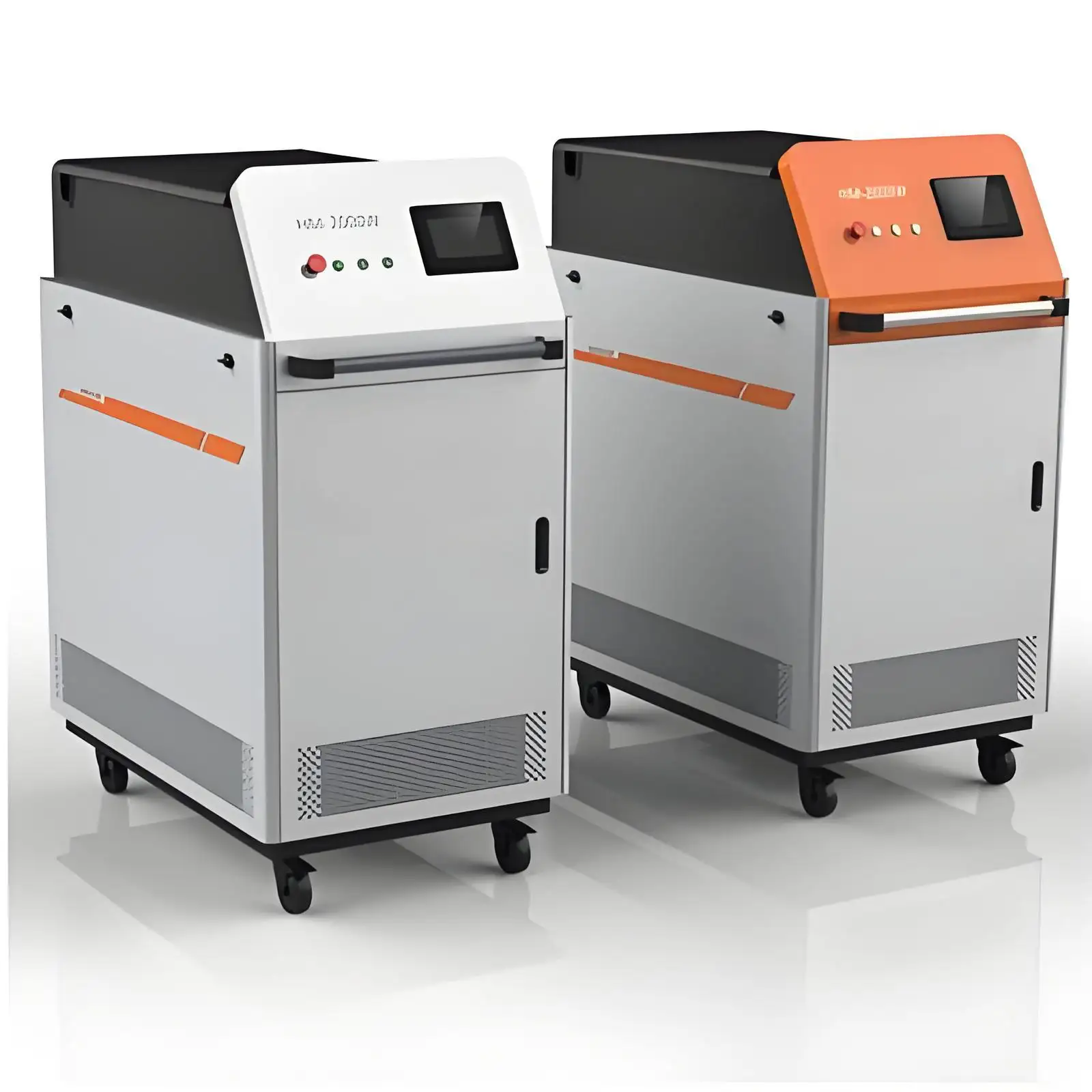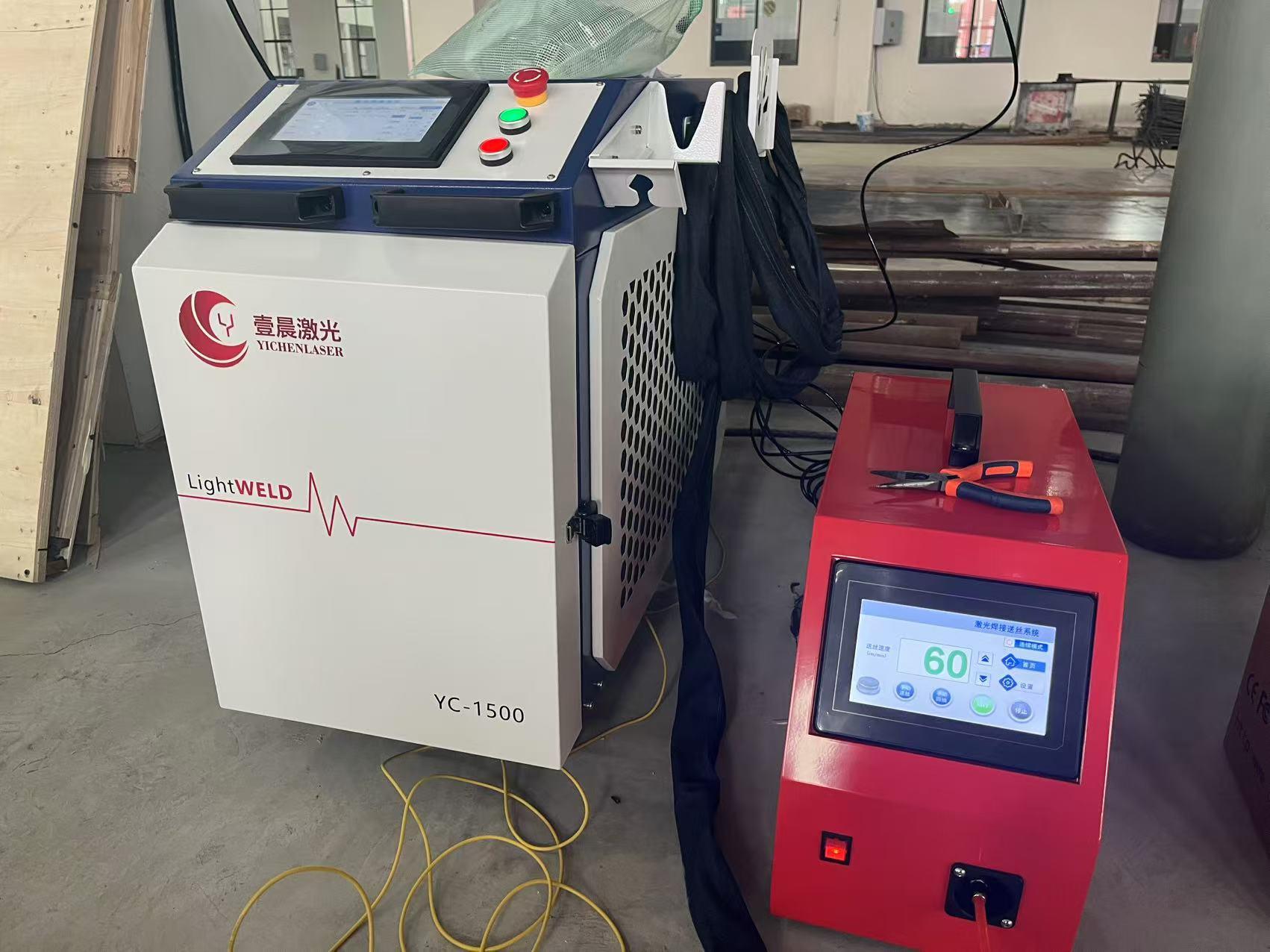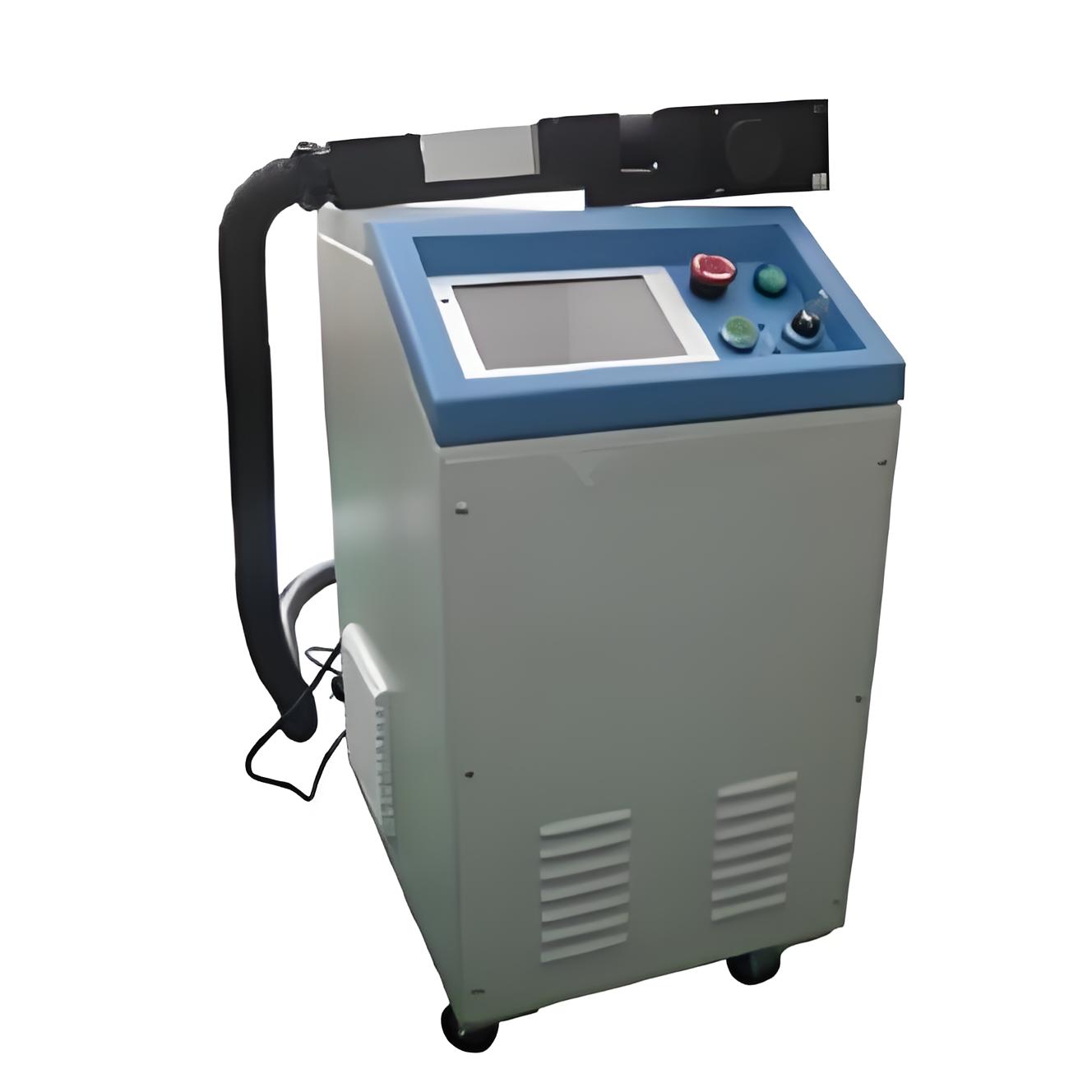In the ever-evolving manufacturing industry, it is crucial to ensure the quality and efficiency of the production process. Laser rust removal equipment has become a powerful tool for surface treatment, capable of removing rust from a variety of components in a non-contact, precise and environmentally friendly way. As someone who has been deeply involved in this industry for many years, I am happy to share my insights.

Understanding the Production Line Requirements
1. Analyzing the Workpiece Characteristics
Before integrating laser rust removal equipment into a production line, it’s crucial to understand the characteristics of the workpieces that need rust removal. Factors such as the material, size, shape, and the severity of rust on the workpieces will all influence the choice of laser parameters and the overall integration strategy.
For example, if the workpieces are made of delicate materials like thin – walled metal sheets, lower laser power and shorter pulse durations may be required to avoid damaging the material. On the other hand, for thick – walled components with heavy rust, higher laser power and longer pulse durations might be necessary. Additionally, the shape of the workpieces can affect the accessibility of the laser beam. Irregularly shaped workpieces may require special fixtures or robotic arms to ensure that the laser can reach all rust – affected areas.
Common Workpiece Materials and Their Laser Rust Removal Considerations
| Material | Laser Parameter Considerations |
|---|---|
| Steel | Generally requires moderate to high laser power. The pulse duration can be adjusted based on the thickness of the steel and the rust layer |
| Aluminum | Lower laser power is usually sufficient as aluminum has a high thermal conductivity. Care must be taken to avoid melting the base material |
| Copper | Similar to aluminum, copper requires careful control of laser parameters to prevent overheating and material deformation |
2. Determining the Production Speed and Throughput
The production speed and throughput of the existing production line are key factors in the integration process. You need to ensure that the laser rust removal equipment can keep up with the pace of the production line without causing bottlenecks.
To do this, you can calculate the time required for rust removal on a single workpiece based on the laser parameters and the size of the rust – affected area. Then, compare this time with the cycle time of the production line. If the laser rust removal process takes longer than the available time in the production cycle, you may need to consider options such as increasing the number of laser units, optimizing the laser parameters for faster processing, or redesigning the production line layout to allow for parallel processing.

Selecting the Right Laser Rust Removal Equipment
1. Types of Laser Sources
There are several types of laser sources available for rust removal, each with its own advantages and disadvantages. Common laser sources include fiber lasers, CO₂ lasers, and Nd:YAG lasers.
Fiber lasers are known for their high efficiency, good beam quality, and long service life. They are suitable for a wide range of materials and can achieve high – speed rust removal. CO₂ lasers, on the other hand, are better suited for non – metallic materials and can provide a large spot size for uniform rust removal over large areas. Nd:YAG lasers offer high peak power and are often used for deep rust removal or for workpieces with complex shapes. When selecting a laser source, consider factors such as the workpiece material, production speed, and budget.
Comparison of Common Laser Sources for Rust Removal
| Laser Source | Advantages | Disadvantages |
|---|---|---|
| Fiber Laser | High efficiency, good beam quality, long service life | Relatively high initial cost |
| CO₂ Laser | Suitable for non – metallic materials, large spot size | Lower efficiency compared to fiber lasers, requires more maintenance |
| Nd:YAG Laser | High peak power, good for complex shapes | Shorter service life, higher operating costs |
2. Laser Power and Beam Delivery Systems
The laser power required for rust removal depends on the factors mentioned earlier, such as the workpiece material and rust severity. It’s important to choose a laser with sufficient power to achieve the desired rust removal results within the required time frame.
In addition to laser power, the beam delivery system is also crucial. The beam delivery system should be able to accurately direct the laser beam to the rust – affected areas of the workpieces. Common beam delivery systems include articulated arms, fiber optic cables, and galvanometer scanners. Articulated arms offer high flexibility and can reach workpieces in various positions, but they may be more prone to wear and tear. Fiber optic cables are durable and can transmit the laser beam over long distances with minimal loss, but they have limited flexibility. Galvanometer scanners are known for their high – speed and precise beam steering capabilities, making them suitable for high – volume production lines.

Designing the Integration Layout
1. In – Line vs. Off – Line Integration
There are two main approaches to integrating laser rust removal equipment into a production line: in – line and off – line integration. In – line integration means that the laser rust removal process is an integral part of the production line, and workpieces move through the laser rust removal station as part of the continuous production flow. This approach is suitable for high – volume production lines where efficiency is a top priority.
Off – line integration, on the other hand, involves setting up the laser rust removal equipment as a separate station. Workpieces are removed from the production line and transported to the laser rust removal station for processing before being returned to the line. This approach offers more flexibility, as it allows for easier maintenance and adjustment of the laser rust removal process without disrupting the entire production line. However, it may result in longer lead times and lower overall production efficiency.
Comparison of In – Line and Off – Line Integration
| Integration Type | Advantages | Disadvantages |
|---|---|---|
| In – Line | High efficiency, continuous production flow | Less flexibility for maintenance and adjustment, potential for production line disruptions if the laser equipment fails |
| Off – Line | More flexibility for maintenance and adjustment, easier to implement for existing production lines | Longer lead times, lower overall production efficiency |
2. Workpiece Handling and Positioning
Proper workpiece handling and positioning are essential for the successful integration of laser rust removal equipment. You need to design a system that can accurately transport the workpieces to the laser rust removal station and position them in the correct orientation for the laser beam to reach all rust – affected areas.
This can be achieved through the use of conveyor systems, robotic arms, or custom – built fixtures. Conveyor systems are suitable for workpieces with a consistent shape and size and can provide a continuous flow of workpieces to the laser rust removal station. Robotic arms offer high flexibility and can handle workpieces of various shapes and sizes, but they may be more expensive. Custom – built fixtures can be designed to securely hold specific workpieces in the correct position for laser rust removal.

Ensuring Safety and Compliance
1. Laser Safety Measures
Laser rust removal equipment uses high – energy lasers, which can pose a significant safety hazard if not properly managed. It’s essential to implement comprehensive laser safety measures to protect the operators and other personnel in the production area.
This includes installing laser safety enclosures around the laser rust removal station to prevent accidental exposure to the laser beam. The enclosures should be equipped with interlocks that automatically shut down the laser if the enclosure is opened. Additionally, operators should wear appropriate personal protective equipment (PPE), such as laser safety goggles, gloves, and protective clothing. Regular laser safety training should also be provided to all personnel working in the vicinity of the laser rust removal equipment.
2. Environmental and Regulatory Compliance
In addition to laser safety, you also need to ensure that the integration of laser rust removal equipment complies with environmental and regulatory requirements. Laser rust removal may generate dust, fumes, or other by – products that need to be properly managed to prevent environmental pollution and protect the health of the workers.
Install an appropriate exhaust system to capture and remove any dust or fumes generated during the laser rust removal process. The exhaust system should be equipped with filters to trap harmful particles and gases. You should also comply with local regulations regarding noise levels, waste disposal, and the use of hazardous materials.
Monitoring and Maintenance
1. Real – Time Monitoring Systems
To ensure the consistent performance of the laser rust removal equipment within the production line, it’s important to implement real – time monitoring systems. These systems can monitor key parameters such as laser power, beam quality, and the progress of the rust removal process.
By continuously monitoring these parameters, you can detect any deviations from the optimal settings early on and take corrective action before they affect the quality of the rust removal or the production line’s efficiency. For example, if the laser power drops below a certain threshold, the monitoring system can trigger an alarm and alert the operators to check the laser source or the power supply.

2. Preventive Maintenance Schedule
Regular preventive maintenance is essential to keep the laser rust removal equipment in good working condition and minimize the risk of unexpected breakdowns. Develop a comprehensive preventive maintenance schedule that includes tasks such as cleaning the laser optics, checking the alignment of the beam delivery system, and replacing worn – out components.
The maintenance schedule should be based on the manufacturer’s recommendations and the operating conditions of the equipment. By following a regular maintenance schedule, you can extend the service life of the laser rust removal equipment, reduce downtime, and ensure the consistent quality of the rust removal process.
Conclusion
Integrating laser rust removal equipment into a production line is a complex but rewarding process. By understanding the production line requirements, selecting the right equipment, designing an appropriate integration layout, ensuring safety and compliance, and implementing effective monitoring and maintenance strategies, you can achieve a seamless integration that enhances the quality and efficiency of your manufacturing process. Remember, each production line is unique, so it’s important to tailor the integration approach to your specific needs. With careful planning and execution, laser rust removal equipment can become a valuable asset in your production line, helping you stay competitive in today’s market.
Related Questions
Q1: How much does it cost to integrate laser rust removal equipment into a production line?
A1: The cost of integrating laser rust removal equipment into a production line can vary widely depending on factors such as the type and power of the laser, the complexity of the integration layout, the workpiece handling system, and the safety and compliance measures required. A basic integration for a small – scale production line may cost several thousand dollars, while a large – scale, high – volume production line integration could cost hundreds of thousands of dollars or more. It’s best to get quotes from multiple suppliers and consult with experts to get a more accurate estimate for your specific situation.

Q2: Can laser rust removal equipment be integrated into an existing production line without major modifications?
A2: In many cases, laser rust removal equipment can be integrated into an existing production line with relatively minor modifications. Off – line integration is often the easiest to implement, as it only requires setting up a separate laser rust removal station and transporting workpieces to and from it. For in – line integration, some modifications to the production line layout, workpiece handling systems, or control systems may be necessary. However, with careful planning and the help of experienced engineers, it’s usually possible to integrate the laser rust removal equipment without a complete overhaul of the existing production line.
Q3: How long does it take to integrate laser rust removal equipment into a production line?
A3: The time required to integrate laser rust removal equipment into a production line depends on several factors, including the complexity of the integration, the availability of resources, and any potential delays due to unforeseen issues. A simple off – line integration may take a few weeks, while a more complex in – line integration could take several months. It’s important to factor in time for equipment delivery, installation, testing, and training of operators when planning the integration timeline.
Q4: What are the long – term benefits of integrating laser rust removal equipment into a production line?
A4: Integrating laser rust removal equipment into a production line offers several long – term benefits. It can improve the quality of the finished products by ensuring that workpieces are free of rust and other contaminants. This can lead to fewer customer complaints and returns. Laser rust removal is also a fast and efficient process, which can increase the production line’s throughput and reduce lead times. Additionally, it’s an environmentally friendly alternative to traditional rust removal methods, as it doesn’t use chemicals or generate large amounts of waste.
Q5: How do I train my operators to use the laser rust removal equipment in the production line?
A5: Training operators to use laser rust removal equipment is crucial for the safe and efficient operation of the production line. Start by providing them with comprehensive theoretical training on the principles of laser rust removal, the operation of the laser equipment, and safety procedures. Then, offer hands – on training sessions where operators can practice using the equipment under the supervision of experienced technicians. It’s also important to provide ongoing training and refresher courses to keep operators up – to – date with any new developments or changes in the equipment or processes.






